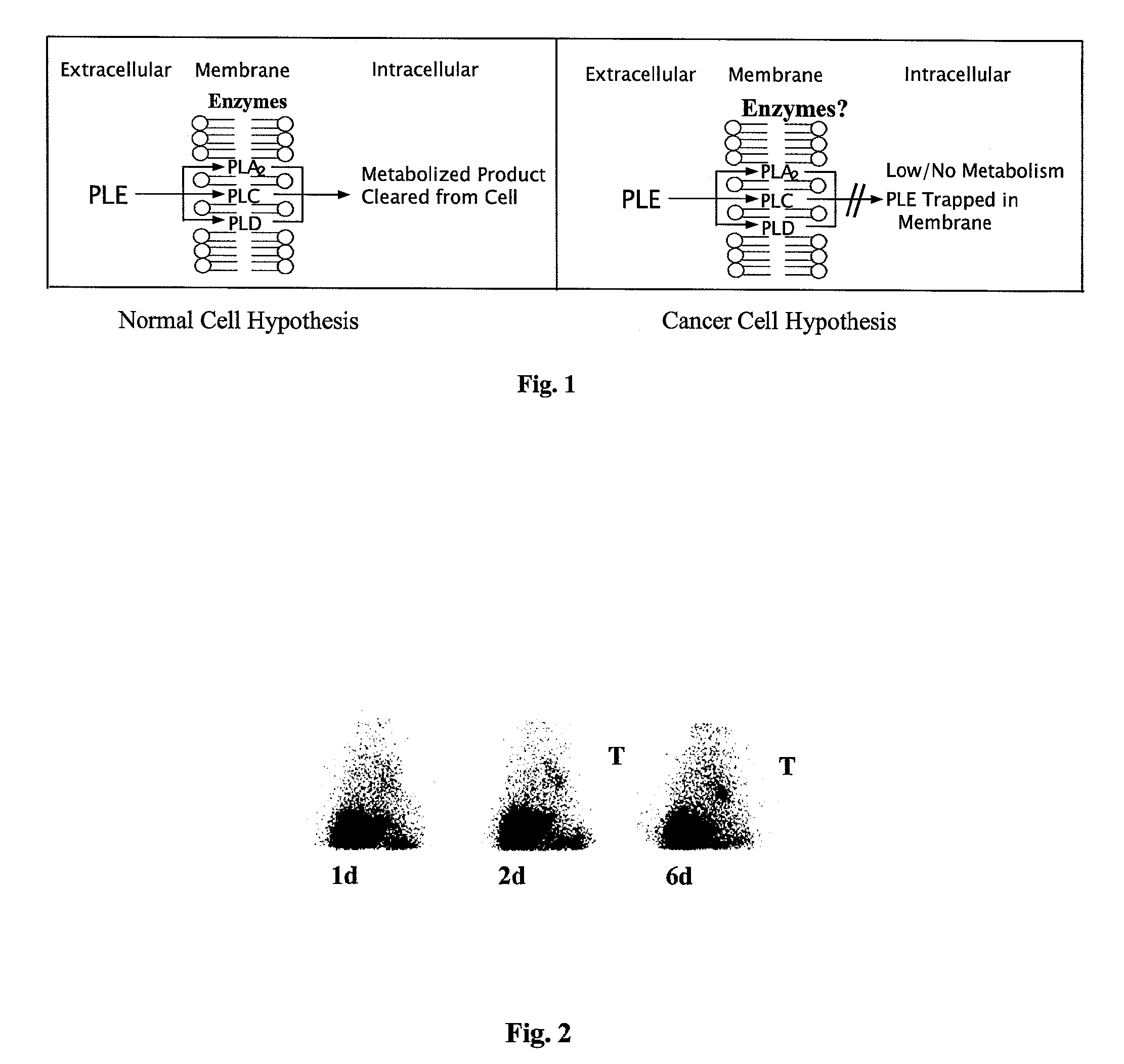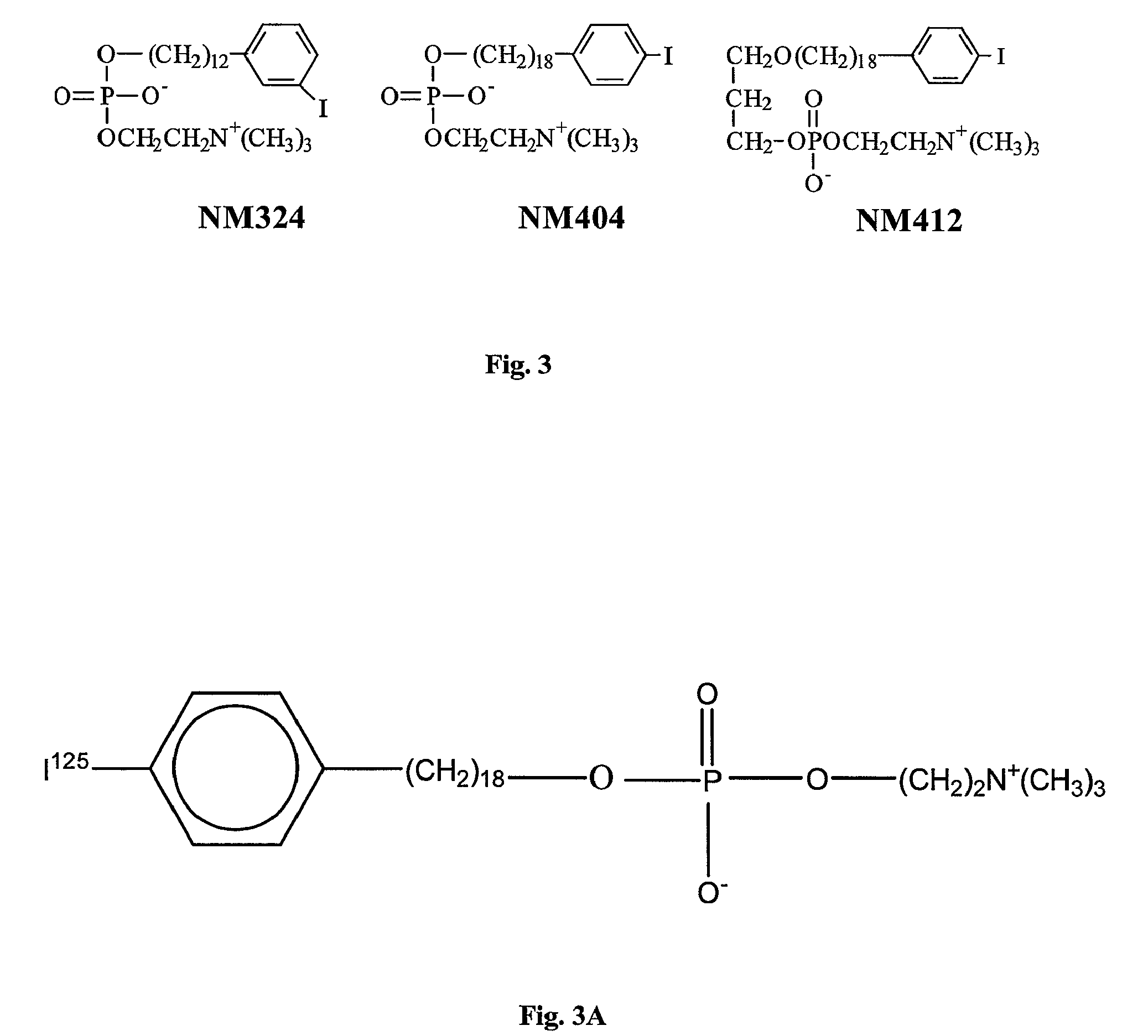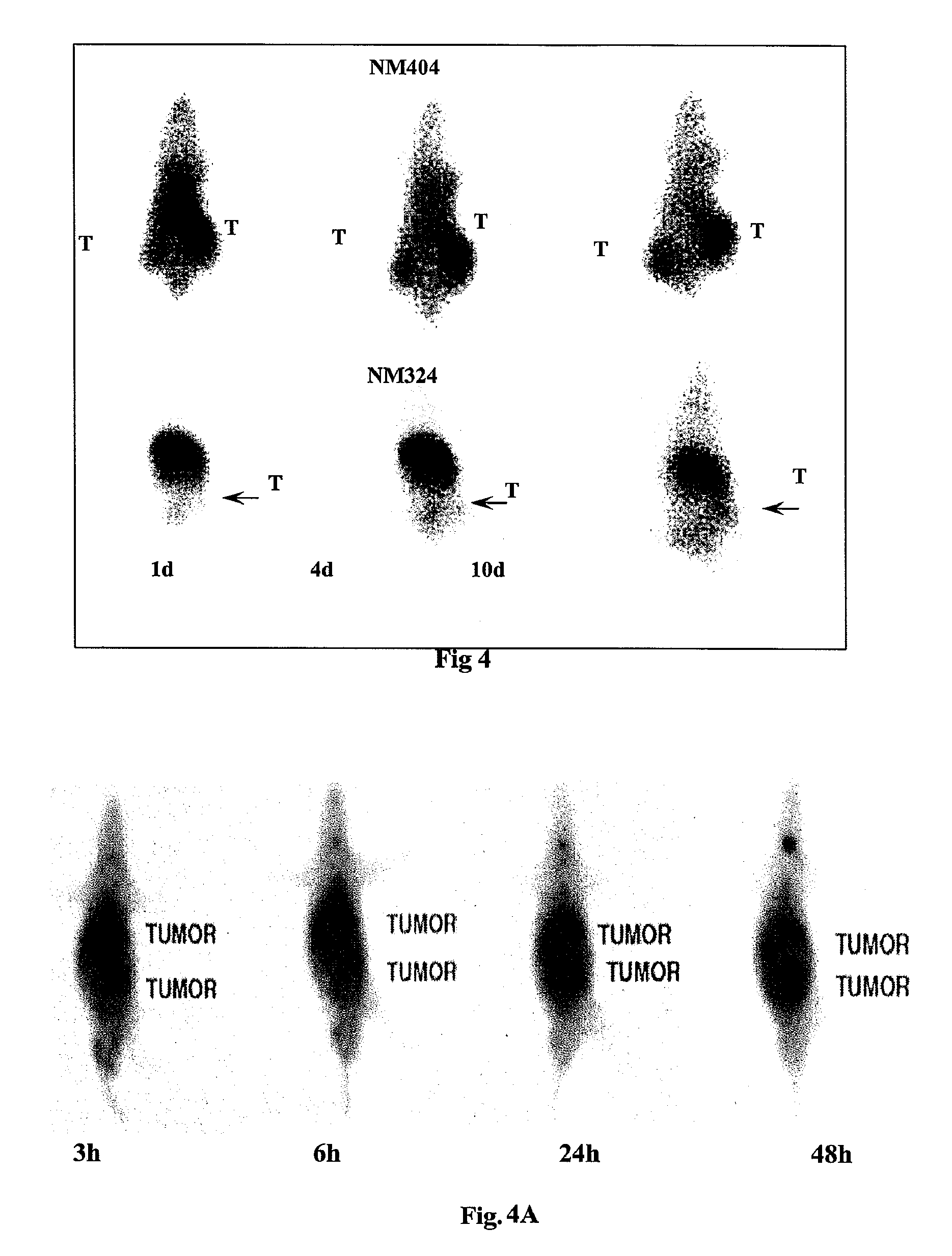Phospholipid analogs as diapeutic* agents and methods thereof
a technology of phospholipid analogs and tumors, applied in the field of tumor diagnostic imaging using phospholipid analogs, can solve the problems of limited application of tumor-localizing agents developed so far for oncological applications, inability to afford a conclusive diagnosis, and inability to meet the requirements of invasive and costly biopsy procedures
- Summary
- Abstract
- Description
- Claims
- Application Information
AI Technical Summary
Problems solved by technology
Method used
Image
Examples
example i
A. Example I
Synthesis, Radiolabeling, and Formulation of NM404
[0126]The inventors' synthetic approach was based on the copper-catalyzed cross-coupling reaction of Grignard reagents with alkyl tosylates or halides for the alkyl chain elongation (see the scheme below). The synthesis was started from p-iodobenzyl alcohol 1 which was converted into p-iodobenzyl bromide 2 by reaction with trimethylsilyl bromide. p-lodobenzyl bromide 2 was further coupled with Grignard reagent 3 in the presence of Li2CuCl4 as a catalyst. 12-(p-lodophenyl)dodecanol 5 obtained after deprotection of the first coupling product 4 was converted into tosylate 6. In the next step, tosylate 6 was coupled with Grignard reagent 7 containing 6 carbon atoms and this completed the chain elongation process. THP deprotection of 8 gave 18-(p-iodophenyl)octadecanol 9 which was converted into 10 (NM-404) by two-step procedure as shown in the scheme.
[0127]
[0128]Further, rapid high yield synthesis process for labeling NM404 w...
example ii
B. Example II
Preclinical Studies with First Generation PLE Analogs
[0144]Phospholipid ethers can easily be labeled with iodine radioisotopes using an isotope exchange method developed by the inventors.19 The iodophenyl phospholipid ether analogs are specifically designed so that the radioiodine affixed to each molecule is stable to facile in vivo deiodination. Over 20 radiolabeled PLE compounds were synthesized and tested in vitro and in vivo.20-22 Two of these, namely NM294 and NM324 [12-(3-iodophenyl)-dodecyl-phosphocholine], initially showed the most promise in animal tumor localization studies. These prototype compounds, labeled with iodine-125, selectively localized in tumors over time in the following animal tumor models; 1) Sprague-Dawley rat bearing Walker 256 carcinosarcoma; 2) Lewis rat bearing mammary tumor; 3) Copenhagen rat bearing Dunning R3327 prostate tumors; 4) Rabbits bearing Vx2 tumors; and 5) athymic mice bearing human breast (HT39), small cell lung (NCl-69), colo...
example iii
C. Example III
Non-Small Cell Lung Cancer
[0157]Imaging and biodistribution studies were performed in SCID (severe combined immune deficiency mutation) mice bearing the human NSCLC adenocarcinoma A549 cell line (adenocarcinoma has become the most frequent human lung cancer histologic type). Preliminary pilot results in five animals were encouraging and demonstrated that the new agent NM404 overcomes a limitation of the NM-324 compound. While there is reasonably good tumor uptake with NM324, imaging is compromised by a high first pass clearance by the liver. However, NM404 shows excellent tumor visualization, especially striking in the delayed images, with minimal liver and kidney uptake. Moreover, tissue biodistribution studies further confirmed the high levels of radioactivity residing in the tumors. A comparison of NM324 and NM404 images in a SCID mouse-human NSCLC model are shown in FIG. 4. Note the relative lack of liver, kidney and gut activity with NM404, coupled with excellent ...
PUM
 Login to View More
Login to View More Abstract
Description
Claims
Application Information
 Login to View More
Login to View More - R&D
- Intellectual Property
- Life Sciences
- Materials
- Tech Scout
- Unparalleled Data Quality
- Higher Quality Content
- 60% Fewer Hallucinations
Browse by: Latest US Patents, China's latest patents, Technical Efficacy Thesaurus, Application Domain, Technology Topic, Popular Technical Reports.
© 2025 PatSnap. All rights reserved.Legal|Privacy policy|Modern Slavery Act Transparency Statement|Sitemap|About US| Contact US: help@patsnap.com



